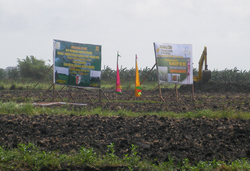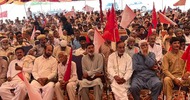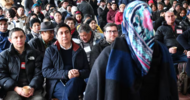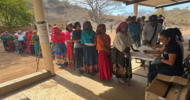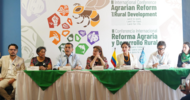Jakarta Post | Sat, 04/30/2011
Norman Jiwan, Jakarta
The Merauke Integrated Food and Energy Estate (MIFEE) program is very strategic in terms of the nation’s food security and energy programs.
The program is expected to produce 1.95 million tons of rice, 937,000 tons of corn, 167,000 million tons of beans, 64,000 cows, 2.5 million tons of sugar and 937,000 tons of crude palm oil (CPO) every year.
However, to make that happen MIFEE needs greater support from both investors and the local government.
According to the Merauke Investment Promotion Board, in May 2010 principal permits to cultivate more than 2 million hectares of land areas were awarded to 36 domestic and foreign private companies.
Recently, the Agriculture Ministry reported that there were 40 investors who were awarded permits in Merauke.
On the other hand, the government is facing huge challenges to ensure that the MIFEE will benefit the country and indigenous people, as well as promote food and energy sovereignty for Papuans and the Indonesian people.
The project could help feed the world. Given the MIFEE’s ideals, it is imperative for us to learn from the economic, social, cultural and environmental experiences of regions across the country to develop such a development model.
The anthropologist Koentjaraningrat said most of Merauke’s population lived upstream of rivers in south Papua, making a living from collecting sago, hunting and fishing.
The majority of the region’s indigenous people do not practice gardening or farming. They do not settle permanently in villages as is done in Java, and instead build homes inside the forest, which they visit regularly and maintain as the homes of their ancestors’ spirits.
Merauke regency is the current home of the Malind Anim people. Four other large tribes — the Mappi, Asmat, Muyu and Mandodo — lived there before regional divisions based on ethnic lines emerged after the formation of the new regencies of Mappi, Asmat, Boven Digul and Muyu.
The majority of the Malind Anim indigenous people in Merauke still make a living from hunting and gathering.
The indirect and direct consequences of the MIFEE project will transform customary land tenures into a modernized system of land control.
The regency’s population of only 233,059 will not be enough to fill the jobs offered by MIFEE.
MIFEE will require an estimate of four permanent laborers per hectare. This means more than 4.8 million external workers will be needed.
It is therefore imperative to consider the future consequences of outsourcing workers. The migrants will inevitability dwarf Merauke’s indigenous population and create an imbalanced labor market.
Karafir found that after 10 years of implementation, the government-sponsored transmigration program in Papua promoted a positive interaction between local people and migrants, enhanced green revolution and helped address agricultural barriers.
In terms of scale and size, the MIFEE, with its complicated agribusiness models and modern technological applications, will not marginalize indigenous communities due to new economic models that will be in place.
As under past transmigration programs, the indigenous Papuans in Merauke will go back to the forests where they can harvest sago and hunting and stay in resettlement villages to farm rice.
Local stories will confirm that transparent, non-coercive and healthy precautionary measures should be taken during land acquisition processes. The acquisition process should lead to clarity and mitigate the impacts and implications of land transfers to prevent disputes and implications for future Papua generations.
Compensation in financial terms is good when and only if remedies for lost opportunities are addressed properly.
This means the indigenous people must approve land transfers through a well-informed decision-making process and meaningful participation.
Hunting grounds and forests will be handed over for nothing unless development promises are translated into compensation that provides remedies for the economic, social, cultural and environmental impacts of the MIFEE project on local people.
The writer is the head of Sawit Watch’s social and environmental risk mitigation initiatives section.


